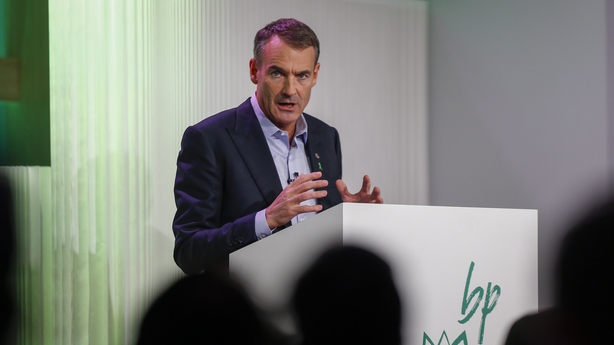BP's second-quarter profit slumped 70% from a year earlier to $2.6 billion, missing forecasts, as refining margins and oil trading income fell, but still allowing the energy giant to boost its dividend by 10%.
Rivals Chevron, Exxon Mobil, Shell and TotalEnergies have also reported sharp drops in quarterly earnings.
The oil giants are being hurt by a drop in energy prices from highs hit following Russia's invasion of Ukraine a year and a half ago.
"Our underlying performance was resilient with good cash delivery - during a period of significant turnaround activity and weaker margins in our refining business," BP's chief executive Bernard Looney said in a statement.
BP's underlying replacement cost profit, its definition of net income, missed expectations of $3.5 billion in a company-provided survey of analysts.
It fell from $8.5 billion a year earlier and from $5 billion in the first quarter.
BP increased its dividend by 10% to 7.27 cents per share, the fourth hike since halving it in the wake of the coronavirus pandemic three years ago. It will repurchase $1.5 billion of its shares over the next three months.
In May, BP slowed down the pace of its quarterly buyback programme to $1.75 billion from $2.75 billion in the previous three months, prompting its largest daily share drop in more than three years.
"The increase in dividend and small reduction in buybacks is likely to be taken positively," said RBC analyst Biraj Borkhataria.
"Given BP has higher leverage than all of its Super-Major peers, more fundamentally, we would have preferred to see the company focus on net debt reduction, with a dividend increase deferred to later in the year," the analyst said.
BP said the weaker results reflected a significant decline in refining margins, a higher level of maintenance activity and weaker trading results compared with the previous quarter.
It said gas trading results were "exceptional" but lower than in the first quarter.

BP's net cash flow was negative in the quarter at $269m, meaning it had to borrow to meet its spending, compared with a surplus of $2.3 billion in the first quarter.
BP's gearing, or debt-to-capital ratio, stood at 21.7% in the second quarter, compared with 19.6% in the first quarter and 21.9% a year earlier.
For the third quarter, BP expects oil prices to be supported by OPEC supply cuts alongside above-historical-average refining margins helped by lower inventories and US demand.
BP expects the European gas and Asian liquefied natural gas (LNG) markets to be "at risk" from a swift filling of European gas storage sites ahead of winter.
In February, Looney scaled back plans to cut oil output, with BP now aiming to produce 2 million barrels of oil equivalent per day by 2030, down just 25% from 2019 levels compared with previous plans for a 40% cut.
The company still aims to sharply expand its renewables and low-carbon business by the end of the decade.
Last month, BP won the rights to develop two large offshore wind projects in Germany, agreeing to pay €678ms upfront, equivalent to 10% of the bid amount.

